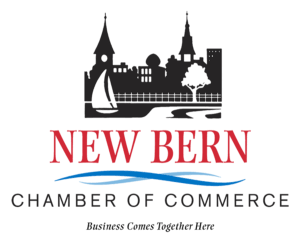When internal messages fall flat, teams drift. The speed of business demands clarity, not just in what is said, but how it's delivered. Traditional memos and slide decks often leave employees tuning out or missing the point entirely. Visual storytelling, long the domain of advertising and entertainment, has stepped into the boardroom—and not just as decoration. It’s reshaping how teams connect, retain knowledge, and act with unity.
Beyond the PowerPoint: Narrative-Driven Design
Forget the default bullet-point layout and generic pie charts. Teams don’t need more slides; they need context wrapped in a story. Effective internal communication now borrows from filmmakers and journalists: introduce conflict, create tension, and resolve it visually. Instead of showing quarterly metrics in a chart, companies are animating the journey—why the numbers matter, what challenges were faced, and who played a role. This approach doesn’t just report progress—it creates emotional engagement, which sticks long after the meeting ends.
Design Thinking Inside the Office Walls
Design thinking isn’t limited to product development; it's become a guiding light for how internal teams communicate ideas. By thinking visually—through journey maps, user personas, or sketched workflows—departments break down complex processes into digestible formats. This isn't about flashy graphics. It’s about building empathy and creating a shared language. When people see their pain points and victories reflected visually, conversations move from abstract to actionable, and decision-making speeds up.
Tactile Messaging with Visual Intent
Print still holds power when it comes to reinforcing internal messaging in spaces where screens dominate. Strategically designed posters, handouts, and desk-side infographics can turn walls, break rooms, and workstations into mini-hubs of engagement. When visuals and text are carefully integrated into compelling layouts, they extend the reach of digital campaigns and offer employees a physical touchpoint that reinforces key themes. Learning how to convert image to PDF helps streamline the process, allowing teams to compile JPGs, infographics, and other visuals into cohesive, branded PDFs for distribution in newsletters or internal bulletins; this also ensures your files are secure and harder to alter once finalized.
Culture Cues in Every Frame
Company culture isn’t built by accident, and visual storytelling offers a subtle but steady drumbeat that reinforces shared values. Whether through an internal video series, animated onboarding flows, or even comic-style policy explainers, organizations now use visuals to signal what matters. And it works. Employees are more likely to absorb a story about real people overcoming real hurdles than skim another policy PDF. Done well, it’s not just informative—it’s unifying.
Real-Time Wins with Visual Recaps
Post-mortems and retrospectives don’t need to gather digital dust. Increasingly, teams summarize project takeaways using infographic-style visuals and short-form videos that can be consumed quickly—and actually remembered. These recaps breathe life into lessons learned, turning them into ongoing narratives instead of one-off reflections. That project that missed its mark? Visuals can tell the story with nuance, highlighting efforts, missteps, and recoveries in a way that text rarely can. It’s not about spin—it’s about retention and relatability.
Bringing the Human Face Forward
Visual storytelling works best when it remembers who it’s for. Faces, voices, and authentic moments do more to humanize internal messages than any slogan ever could. Spotlighting employees in mini-docs, team highlight reels, or candid image series creates connection across silos. This isn’t about fluff or forced smiles in stock photo form—it’s a genuine nod to the people doing the work. When communication reflects the workforce it serves, trust builds—and trust moves teams.
Training That Tells a Story
Onboarding and training don’t need to feel like punishment. When instructional content is wrapped in narrative and visuals, completion rates go up—and so does comprehension. Instead of listing compliance protocols in a sterile format, consider framing them as a narrative journey, with checkpoints and characters facing choices. Gamified video stories and interactive paths make abstract rules tangible. It turns training into participation, not just passive consumption.
Fewer Emails, More Meaning
Visual storytelling isn’t just a garnish for internal comms—it’s an antidote to overload. Inboxes flooded with forgettable updates lose attention fast. But a short, visually-rich summary—something that actually looks interesting—can stand out in the noise. The best visuals distill complexity, not hide it. Charts become storyboards, messages become motion, and employees stop skimming and start absorbing. It’s not about dumbing down; it’s about tuning in.
When visuals lead communication, alignment follows. It’s not magic—it’s clarity. Messages grounded in story and delivered with design break through distraction and help everyone move in sync. The approach isn’t new, but its application inside companies is overdue. As teams grow more dispersed, and attention harder to earn, visual storytelling becomes not just a strategy—but a necessity.
Discover the vibrant community of New Bern and unlock unparalleled business opportunities by joining the New Bern Area Chamber of Commerce today!


